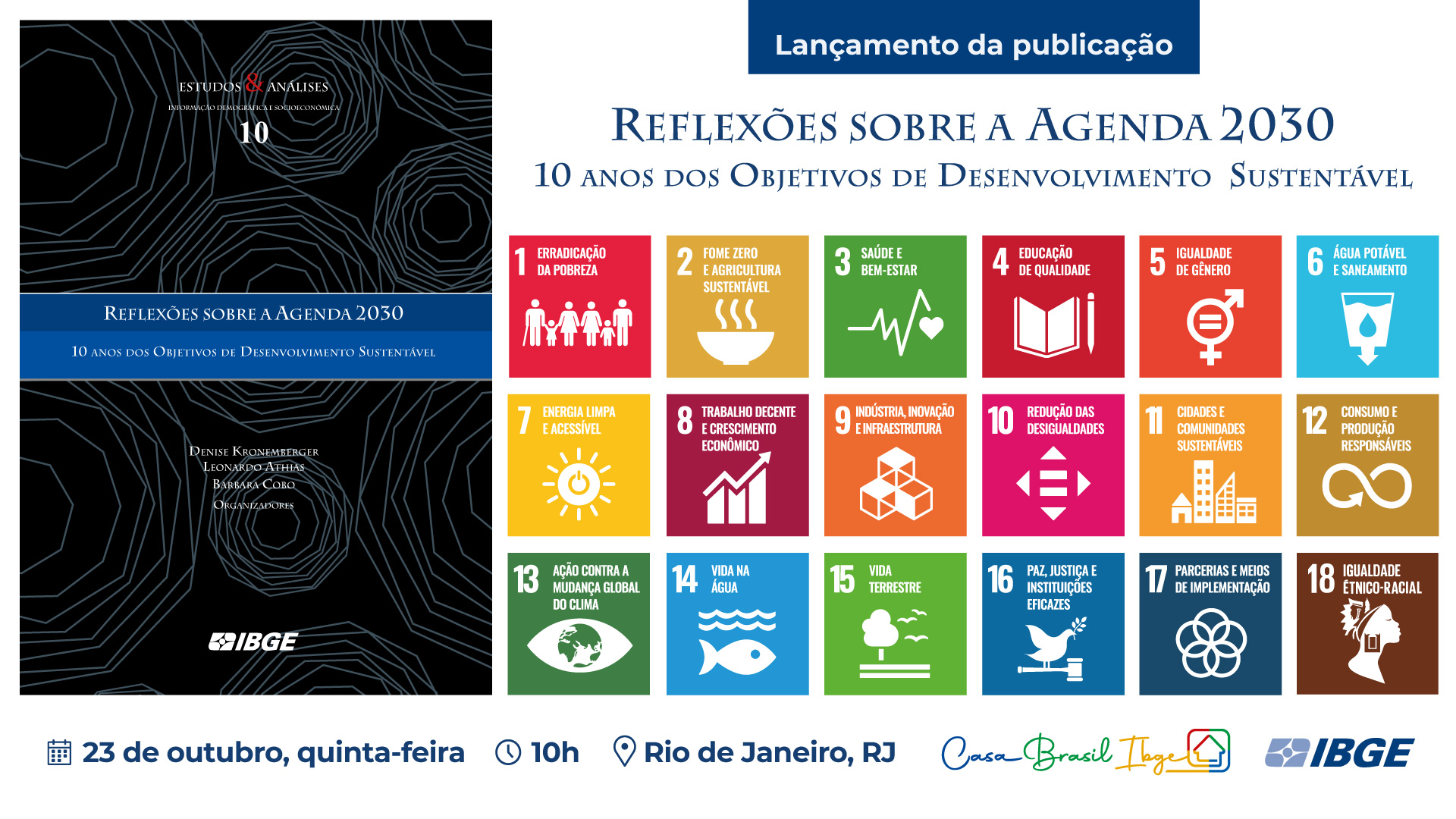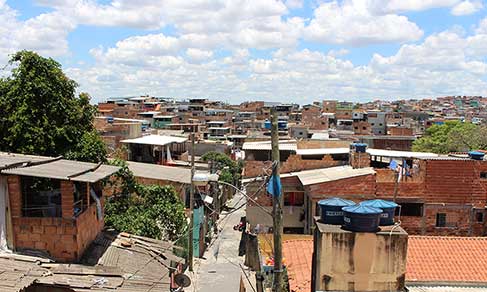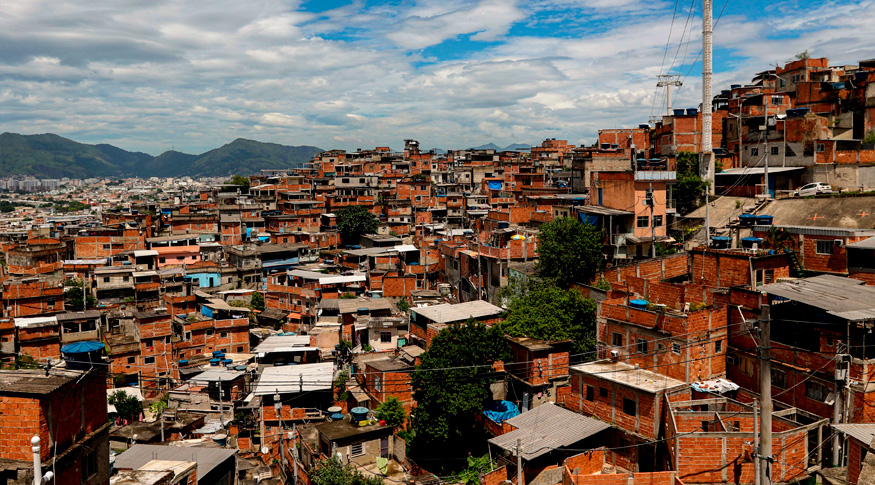Summary of Social Indicators
In 2022, hourly earnings of white workers (R$ 20.0) was 61.4% above that of black or brown ones (R$12.4)
December 06, 2023 10h00 AM | Last Updated: December 08, 2023 10h55 PM
Highlights
- In 2022, the hourly earnings of the employed white population (R$ 20.0) was 61.4%, above that of the black or brown population (R$12.4). By level of schooling, the biggest difference (37.6%) was found in complete higher education: R$ 35.30 for white persons and R$ 25.70 for black or brown ones.
- In 2022, 40.9% of the Workers in the country were employed in informal positions. The proportion of informal work among black or brown women (46.8%) and black or brown men (46.6%) exceeded the average, whereas white women (34.5%) and white men (33.3%) had rates below average.
- In the employed population in the country, white persons made up 44.7%, and black or brow persons, 54.2%. The activities with the lowest average earnings had a bigger proportion of black or brown workers, for example, Agriculture (62.0%), Construction (65.1%) and Domestic services (66.4%).
- In 2022, the employment population ratio among men reached 63.3% and, among women, 46.3%. Inequality remained, even among those with a higher education degree: 84.2% for men and 73.7% for women.
- In 2022, about 6.1 million workers in the country were time-related underemployed, which is equivalent to 6.3% of the employed population. Among white male workers, 3.8% (or 912 thousand) were underemployed. Among black or brown female workers, 9.4% (or 2.0 million) were time-related underemployed.
- In 2021, the share of worker’s earnings in Brazil’s GDP reached 39.2%. That is the lowest rate recorded since 2010 (41.6%). In the OECD ranking of worker’s earnings share of GDP, Brazil went from the 28th position in 2015 to the 40th position in the period 2020-2021.

From 2021 to 2022, the percentage of employed persons with a formal contract dropped from 48% to 47.6%. In the same period, however, the share of workers without a formal contract and of self-employed Workers increased from 45.6% to 46. 4%. Therefore, the difference between these two employment categories reached 1.2 percentage points (p.p.), the lowest since 2012, start of the time series of the Continuous National Household Sample Survey (Continuous PNAD). Data come from the Summary of Social Indicators (SIS), released today by the IBGE. More News about the study can be found here, here and here.
“Data reveal the increased share of less socially-protected jobs in the Brazilian labor market structure, a condition that differs from that in the first half of the decade, mainly 2014, when the difference was higher, in favor of jobs with a formal contract,” says João Hallak, manager of the survey. In 2014, the percentage of persons employed with a formal contract hit 51.9% against 41.2% of the group employed without a formal contact and self-employed workers.
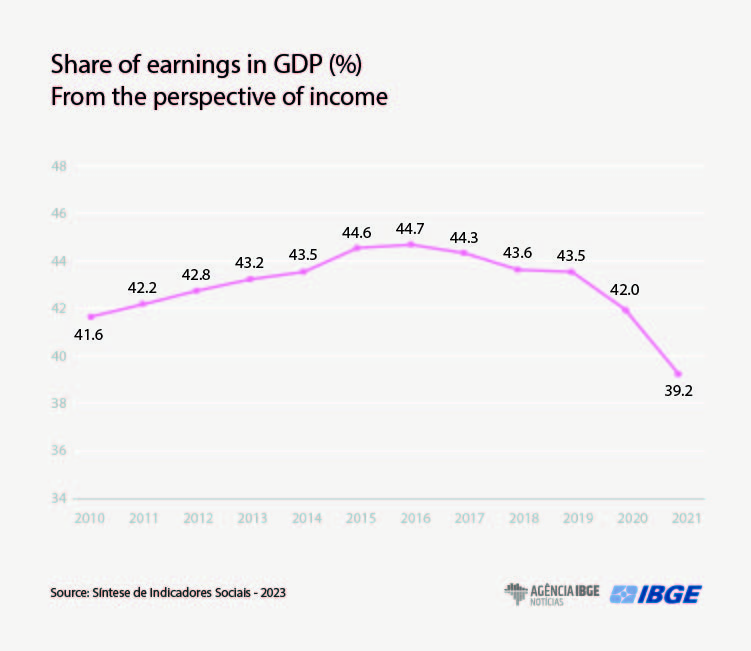
Informality is highest among black and brown workers
The proportion of persons employed in informal activities reflects historically built inequalities, s
uch as the higher proportion of black or brown persons working without a formal employment contract, and the non-contribution to social security by self-employed persons and employers.
In 2022, 40.9% of the workers in the country were employed in informal jobs. For black or brown women (46.8%) and black or brown men (46.6%), this proportion was above average. Among white workers (34.5%) and white men (33.3%), these proportions were below average. The same behavior has been observed in the entire Continuous PNAD series, since its beginning, in 2012.
Informality is lowest among workers with more education. Among employed persons with a higher education degree, 22.8% were in informal positions, a proportion that reached 62.8% among persons without schooling of with incomplete primary education.
Black or brown workers are the majority in activities with lower earnings
Considering the total employed persons in the country, the proportion of the white population made up 44.7%, and the black and brown population, 54.2%, figures that are close to those recorded for population in the workforce. Nevertheless, the analysis by economic activity shows the segmentation of Jobs and the severe racial segregation in labor market. The proportion of black and brown workers is more pronounced in Agriculture (62.0%), Construction (65.1%) and Domestic services (66.4%), activities with earnings below the average in all the years of the time series.
On the other hand, groups of activity with higher average earnings, such as Information, finance and other professional activities, as well as Public administration, education, health, defense and social services, have, proportionally, a bigger presence of white employed persons (55.9% and 49.6% respectively). The same pattern was observed in the entire Continuous PNAD time series, between 2012 and 2022.
Even women with more education have a lower employment population ratio
In 2022, the employment-population ratio of men reached 63.3% against 46.3% for women, a trend that, except for some small oscillations, remained in all Years of the Continuous PNAD time series. Among Workers with a higher education degree, this indicator was 84.2% for men and 73.7% for women.
In 2022, the employment population ratio of women with complete higher education (73.7%) was 3.1 above that of women without schooling or with incomplete primary education (23.5%). Among men, the difference was smaller, of 1.7 (84.2% and 50.4%, respectively).
The difficulties faced by women to find a job and remain employed are acknowledged, says Mr. Hallak. “Mainly when there are no laws or public policies for this purpose,” he adds. He also mentions the smaller participation of women in the workforce. “Once the rate of completion of household tasks in their own housing unit or in the housing unit of a relative is higher above women, as well as that of care provided to residents or relatives who do not live in the housing unit.”
Hourly earnings of white persons exceeds that of black or brown ones for all levels of schooling
In 2022, the white employed population (R$3,273) earned, on average, 64.2% more than the black or brown population (R$1,994). Men (R$2,838) earned 27% more than women (R$2,235) did. However, the average earnings of white women (R$2,858) exceeded that of black or brown men (R$2,230).
In 2022, the white employed population had hourly earnings of R$ 20.0, which was 61.4% above that of the black or brown population (R$12.4). This difference was observed for all levels of schooling and was highest (37.6%) between persons with a higher education degree: R$ 35.30 for white persons and R$ 25.70 for black or brown ones.
The same indicator, by sex, shows that men’s earnings (R$16.70) exceeded women’s (R$14,80) by 12.8%. As in the comparison by color or race, the biggest difference was observed among persons with complete higher education, since the average earnings of men (R$38.10) was above that of women (R$26.70) by 43.2%. “These results indicate the existence of structural inequalities, because these differences, except for some oscillations, were registered every year from 2012 a 2022,” explains the manager of SIS.
One in ten black or brown workers were underemployed
Time-related underemployment examines employed persons who worked less than 40 hours per week and wanted to work more hours and were available to do so. In 2022, about 6.1 million workers in the country were time-related underemployed, equivalent to 6.3% of the employed population. This percentage was the lowest in the last six years, although still higher than in 2016 (5.5%).
Among white male workers, 3.8% (or 912 thousand) were underemployed. On the other hand, among black or brown female workers, 9.4% (or 2.0 million) were underemployed due to insufficient hours worked.
Throughout the series, time-related underemployment has affected more prominently women of black or brown color or race, the younger population, and workers with a lower level of education. In 2022, black or brown women represented 22.2% of the employed population, but 33.1% of the time-related underemployed population.
In 2021, the share of labor compensation in the GDP was the lowest since 2010
SIS also analyzed the Gross Domestic Product (GDP) of the country in 2021. The study reveals that the share of workers' compensation in the GDP reached 39.2%, the lowest figure since 2010. Mr. Hallak explains that there has been a downward trend since 2016 when it peaked (44.7%) after a trajectory of growth since 2010 (41.6%). "We can attribute this result to the decrease in employment levels and the increase in informality and its impacts on average earnings and the wage bill," explains the researcher.
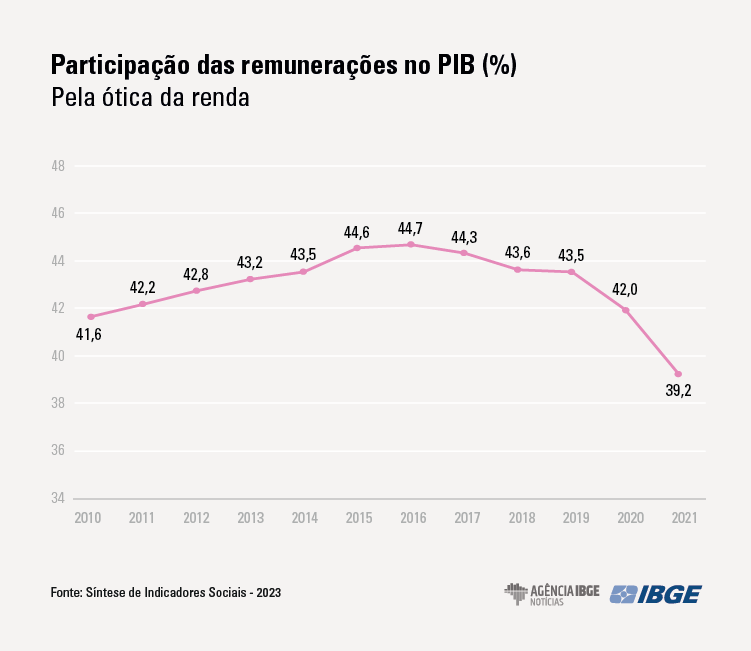
Based on the ranking of approximately 50 countries from the Organization for Economic Cooperation and Development (OECD) database, Brazil ranked the 28th position in the participation in income from work in 2015, falling to the 40th position in the 2020-2021 biennium. "Nationally, the share of labor compensation in 2021 was lower than the 2010 level, revealing a 'lost decade' in this indicator," Mr. Hallak concludes.
More about the survey
The Summary of Social Indicators: an analysis of the living conditions of the Brazilian population in 2023 aims to systematize and present a set of information related to the social reality of the country, based on structural topics of great relevance for the construction of a comprehensive framework on the living conditions of the Brazilian population.
This edition features indicators on economic structure and labor market, standard of living and income distribution; housing conditions and education. The analyses by population groups draw attention to earnings inequality, gender, color or race, age groups, urban or rural housing units and household arrangements, showing the evolution of indicators in the time series. The information presented refers to Major Regions, Federation Units and, for some indicators, capital municipalities.





